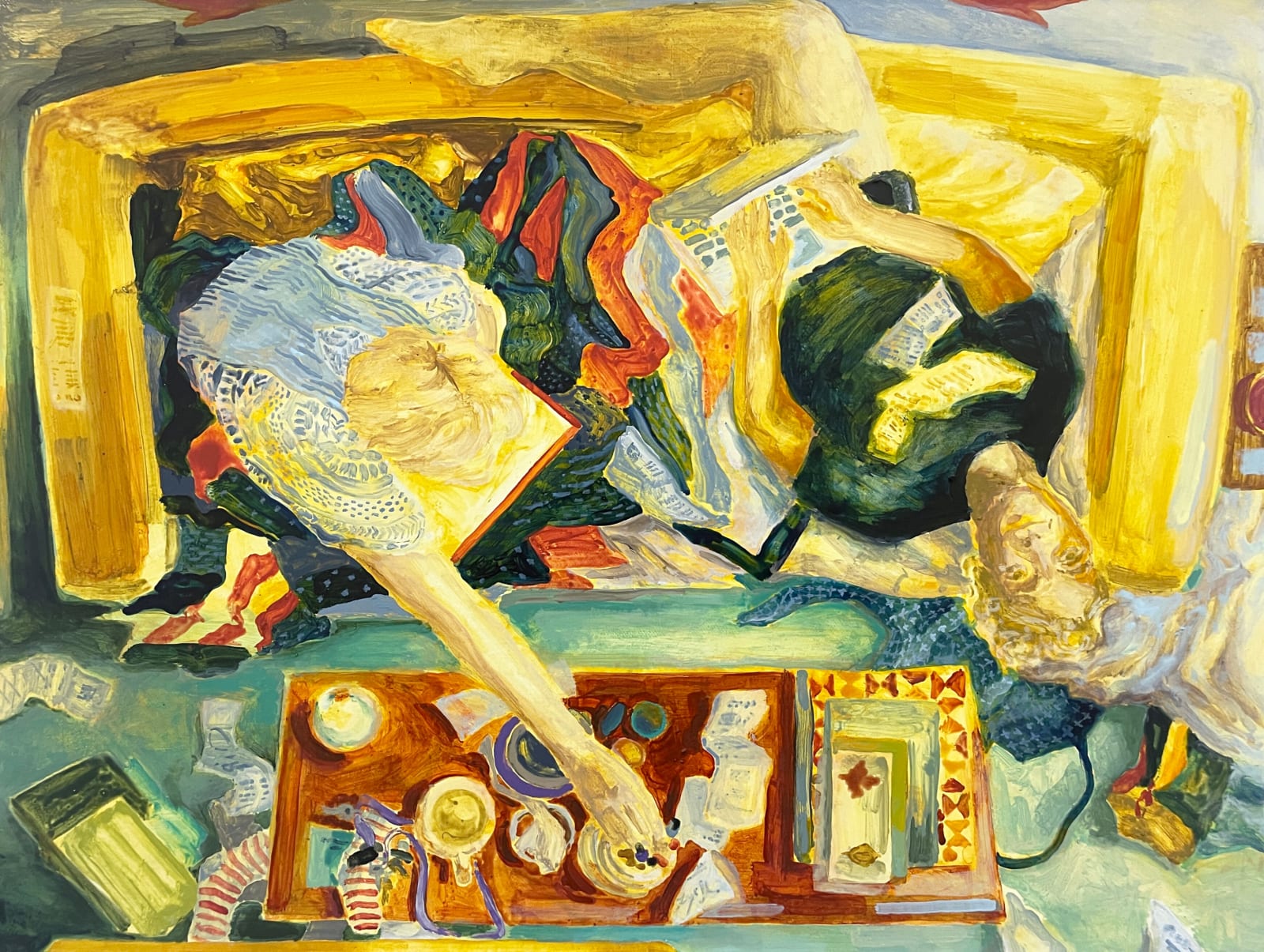Lauryn (Red) Welch USA, b. 1991
Thought and Memory, 2024
oil on canvas
18 × 24 in | 45.7 × 61 cm
signed and dated 2024 verso
Copyright: The artist and Andrea Festa
The collective exhibition “Boudoir” aims to explore the existentialist themes of self-discovery and identification through coexistence, observation, and the flow of consciousness, emphasizing, however, the importance of the relationship with...
The collective exhibition “Boudoir” aims to explore the existentialist themes of self-discovery and identification through coexistence, observation, and the flow of consciousness, emphasizing, however, the importance of the relationship with the other, accompanied by plausible mutual influences. In fact, this figurative journey of self-knowledge is achieved mostly through relationships, including sexual ones, albeit in conjunction with the inescapable experience of loneliness.
In this regard, according to German philosopher Martin Heidegger, the human being is by nature a Being-in-the-world and this corresponds to the concept of Dasein, that is, a form of being aware of issues such as being a person, being mortal and the dilemma - paradox of living in relationships with others while fundamentally existing alone with oneself, that is, that while the individual lives in the world and relates to others, there also exist a fundamental dimension of ontological solitude, which becomes evident when the individual is confronted with their most authentic existence, which pushes us to directly confront our interiority since. It is only there that the individual can confront the innate meaning of life itself.
Moreover, the existentialist Jean-Paul Sartre, for example, spoke in this regard about the concept of “the gaze of the other,” in which we see ourselves as objects in the eyes of the other, expressing the idea that the perception of ourselves is deeply influenced by how others see us.
And it is, nevertheless, only through this gaze that we can finally feel aspects of our identity that we did not perceive before. It is therefore an experience of self-recognition that occurs in social interaction, where we tirelessly find ourselves having to compare ourselves to others.
The sexual aspect is, moreover, a fundamental part of this individual and unitary process of self- discovery, where voluptuousness is conceived not only as a physical expression of desire but also as a means through which we explore the boundaries of intimacy, vulnerability, and personal power: a complex experience through which people explore their roles within relationships, among passionate power games and under the grip of abysmal fragilities.
And so, on the basis of the aforementioned premises, all the works that make up the exhibition in question intend to explore in depth the relationship between the body and pain, using the stripped image of the self as a tool to analyze one's identity and experience of emotional loneliness, without ever forgetting the perception and of the presence of others, but above all of the fact that, as the Marquis de Sade wrote in his book Philosophy in the Boudoir dated 1795, “[...] certain effects transport us, set us on fire!” and “(they) will undoubtedly lead us to happiness.” Therefore, they should not be stifled.
Thus, at the hands of Emiliana Henriquez, Alexander Skats, Vanessa Gully Santiago, Oh de Laval, RF. Alvarez, Yann Leto, Elena Redmond, Bre Andy, and Lauryn Welch, a “boudoir” novel - a French term to indicate a small, private room used by women to retreat, take care of themselves, or meet in intimacy - which no longer represents just a physical place of sharing but also becomes, in clear terms, a symbol of an intimate space and personal freedom.
Exhibitions
Boudoir September 20 – November 15, 2024
Join our mailing list
* denotes required fields
We will process the personal data you have supplied in accordance with our privacy policy (available on request). You can unsubscribe or change your preferences at any time by clicking the link in our emails.


